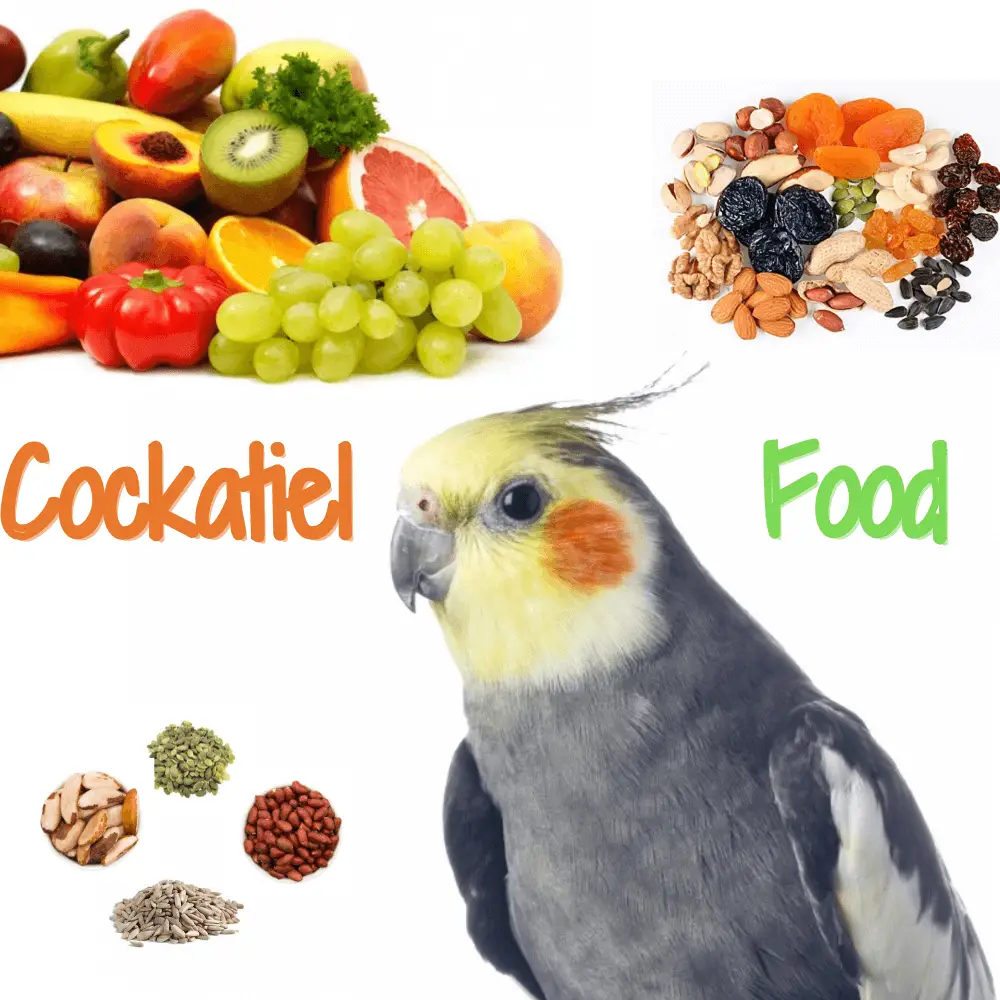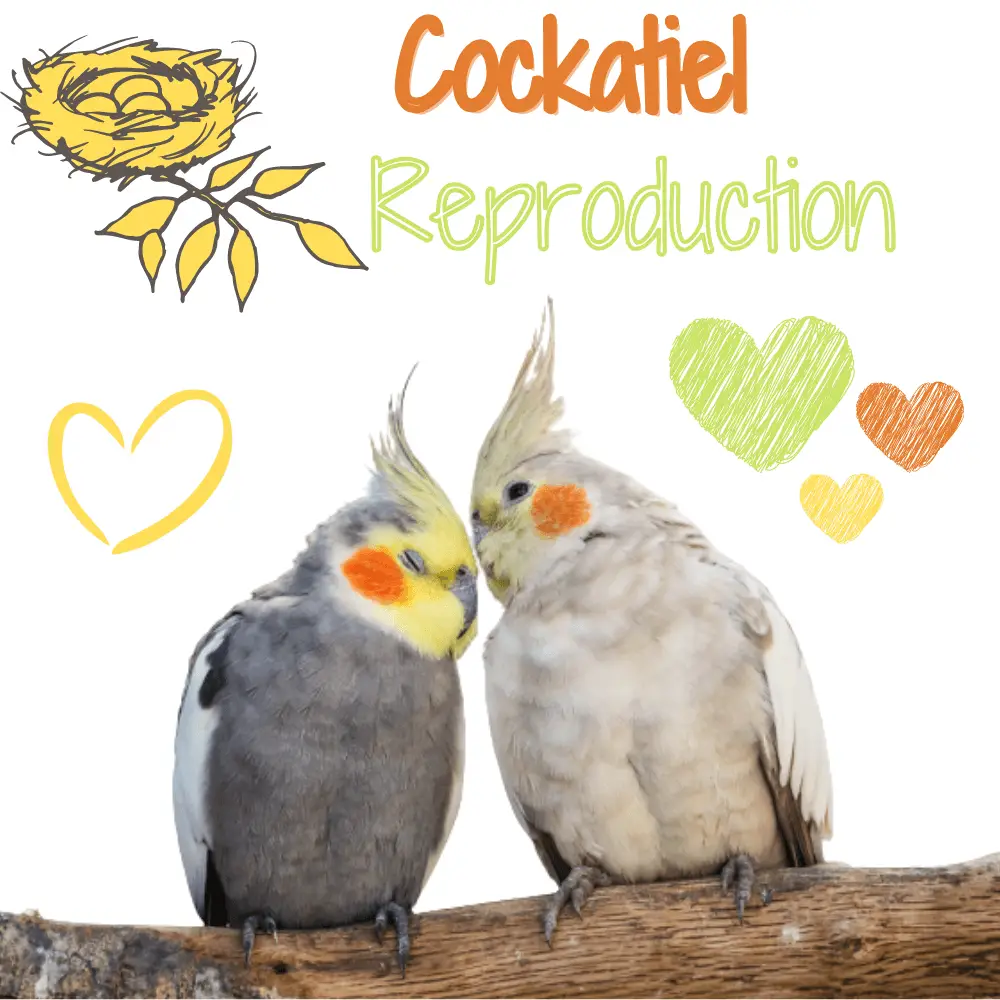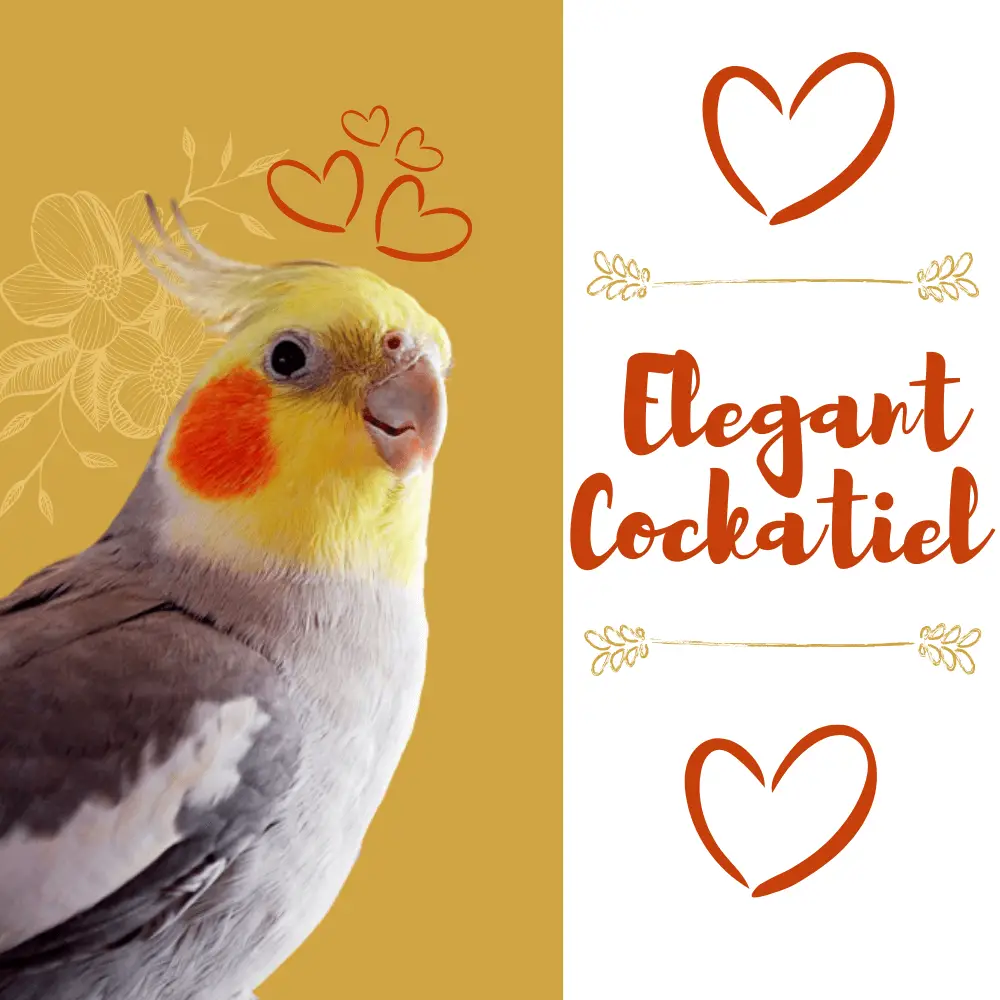Elegant Cockatiel is the kind of bird that brings a lot of life to your home. We never tire of seeing her have fun, express herself and thrive. The yellow crest that it has on the head and the red-orange marks on its cheeks are part of the physical particularities of the elegant Cockatiel, which is native to Australia.
Other names: Cockatiel, Nymph Parakeet Scientific
name: Nymphicus hollandicus
| Family | Cacatuidae |
|---|---|
| Kind | Nymphicus |
| Weight | From 80 gr to 100 gr |
| Cut | From 30 cm to 40 cm |
| cockatiel lifespan | From 15 to 30 years oldThe life expectancy of the elegant Cockatiel is between 15 and 30 years. |
|---|
History of the breed
The description of the elegant parakeet was carried out by the zoologist Johann Georg Wagler in 1832, but observers had already met before in its natural environment.
Today, the world population of elegant Cockatiels is estimated at one million birds.
In some Australian regions, it is considered harmful by farmers.
Cockatiel Behavior
In the wild, the elegant cockatiel often lives in large groups which may consist of several dozen individuals.
The latter communicate with each other via various types of calls. They are also able to imitate those of other species of birds.
Within these bands, couples form for life. These duets even persist outside of breeding periods.
In captivity, the elegant Cockatiel is a bird that tames very easily and is extremely pleasant to observe.
Very sociable, expressive, and playful, she needs to be stimulated frequently through games and demands the proximity of her master.
You should also know that it is particularly noisy. It is a fact to take into account when adopting one or more.
Cockatiel Food

In its natural environment, the elegant cockatiel feeds on various seeds (sunflower, millet …), cultivated cereals (sorghum …), and fruits.
The diet to be assured at home must therefore be close: special granules for large parakeets supplemented with fresh fruits and vegetables.
We must also ensure that it has fresh and clean water, therefore renewed daily.
A cuttlefish bone and a mineral stone also provide it with calcium and minerals.
Certain foods are dangerous for the Cockatiel and therefore should not be given to it: raw potato, parsley, avocado, beet, dairy products, meat foods, onion, garlic, mushrooms, and citrus fruits in particular.
Cockatiel Reproduction

The elegant Cockatiel can reproduce from the age of one year, but it is advisable to wait for a few more months before mating: 15 months for the male and 18 months for the female.
This lays 3 to 7 eggs and the incubation lasts between 16 and 22 days, depending on the ambient temperature. Brooding is also ensured alternately by the male (during the day) and the female (at night).
Cockatiel Health
To be healthy, the elegant Cockatiel needs a balanced diet and quality hygiene. The latter notably goes through baths and regular checking of its plumage, in order to detect any parasites. The claws and the beak are also to be inspected from time to time.
In addition, the elegant Cockatiel is very sensitive to drafts and must therefore be constantly protected.
Cockatiel bird care
The elegant Cockatiel can be content with a spacious cage if it is alone. It should be placed in a busy room to avoid feeling lonely. If there are several, an aviary is better indicated.
This bird needs to fly freely at least once a day. It is therefore advisable to release it in a large secure room.
The cage or aviary is to be adorned with natural wooden perches, swings, various toys, and containers for food and water (manger, drinkers). It should be cleaned regularly.
It is also advisable to provide a spacious birdhouse, preferably made of wood.
Cockatiel Habitat
The elegant Cockatiel is native to Australia. It lives mainly outside the coastal regions of the island continent, as well as in Tasmania. This bird especially likes meadows and savannahs but does not hesitate to live in urban areas either.
Wild COCKATIELS in Australia
SOURCE: Angus

